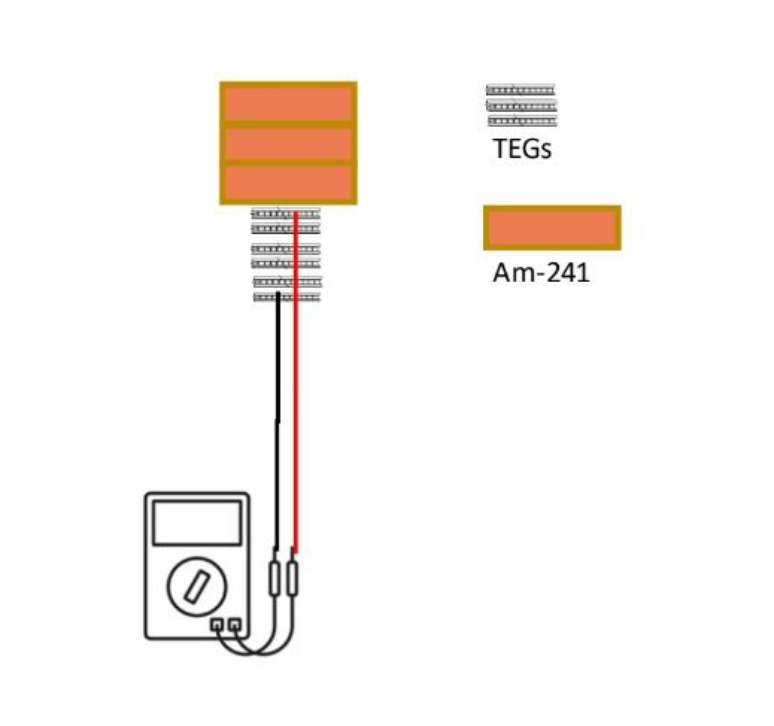Heat released from the decay of an americium isotope powers the first nuclear battery developed in Brazil, with an extremely long charge life
In Brazil, scientists at the Institute of Nuclear Energy and Research (IPEN-CNEN) have developed the first national nuclear battery, using a decaying isotope of americium (amerium-241). Without needing additional charging, it can provide power to home appliances for more than 200 years.
- The nuclear battery can work for 50 years without recharging
- Microsoft AI reveals replacement material for lithium-ion battery
Brazilian research has developed a thermoelectric nuclear battery, also known as a radioisotope thermoelectric generator (RTG). The production of electricity occurs from heat and does not involve nuclear fission, as in the case of a thermonuclear battery.
Trying to understand the development phases and when we will be able to use nuclear batteries – which will put an end to battery chargers –, the Canaltech spoke with Maria Alice Morato Ribeiro, researcher at the IPEN Nuclear Engineering Center and coordinator of the project.
How does the nuclear battery work?
Before explaining, it is worth defining what americium is. It is a radioactive metal, relatively malleable and silver in color, whose symbol on the periodic table is Am. It is an emitter of alpha and gamma particles, with an alpha particle activity about three times greater than that of radium. The element has 10 isotopes known to science.
In the nuclear battery, the natural decay heat of the radioisotope is what will generate electrical energy. As part of the process, this heat must pass through thermoelectric inserts that generate electrical energy (TEG).

For now, the output voltage on the thermoelectric pads is 20 millivolts (mV). This is a result of the temperature difference in the thermoelectric pads between the Americium source (hot side) and the outside (cold side).
This voltage powers a collector circuit that stores sufficient energy and then periodically powers small loads. However, because the current model has very low power generation capacity, a source with higher activity is needed just to light an LED.
Below, see a diagram of how the thermoelectric nuclear battery works:

What is impressive about the battery is its lifespan, estimated at 200 years, since the half-life of americium is 432.6 years. However, “we still face technical challenges related to the reliability of thermoelectric pellets, which must operate for an equivalent period,” Ribeiro points out.
Therefore, the scientist claims that this first battery was actually developed to validate the concept. The next step is to build an improved version, with a power of 100 mW.
Where to use a nuclear battery?
Today, nuclear batteries are already used in places that are difficult to access. This is the case of lighthouses on desert islands and devices sent into space, such as satellites. You rover from the NASA also use this type of technology, such as Curiosity and the Perseverance.
Recently, a Chinese startup announced the development of batteries to power personal devices, such as mobile phones, drones and computers.
In the case of the Brazilian battery, the idea is to use it for devices installed in remote locations. However, the scientist cannot yet go into the details of these plans due to confidentiality issues involving the partners.
Does a nuclear battery pose any risks?
Thinking about anything nuclear immediately poses serious risks to human health and the environment, but numerous protections exist. For example, “the use of effective shielding” ensures safety, as Ribeiro states. Furthermore, “the radioisotope is contained in a sealed source, with no risk of dispersion of the material”, he adds.
Interestingly, in the 1970s, nuclear batteries, such as plutonium-238 and promethium-147, were widely used in pacemakers for patients with heart problems. The use was discontinued only with the increase of lithium batteries.
Recycling of radioactive waste
Another interesting point regarding these batteries is that they can be created by recycling the radioisotopes present in fuels (already used) from nuclear power plant reactorsincluding americium-241.
Trends on Canaltech:
- Samsung lists devices that will get camera features from the S24
- The Avengers led by Iron Man finally help the X-Men
- The 50 funniest Google Assistant jokes
- The New Avengers comic is the “Dark Knight” of Captain America
- 🔥DISCOUNT | Buy Galaxy S23 512 GB on super offer with coupon
Source: Terra
Rose James is a Gossipify movie and series reviewer known for her in-depth analysis and unique perspective on the latest releases. With a background in film studies, she provides engaging and informative reviews, and keeps readers up to date with industry trends and emerging talents.







